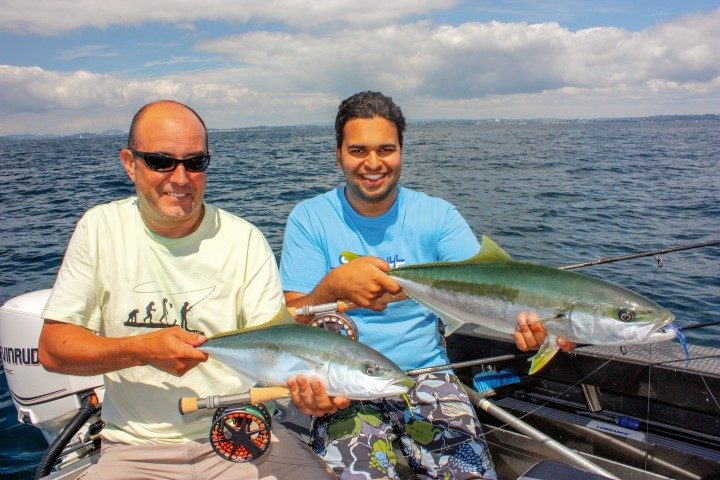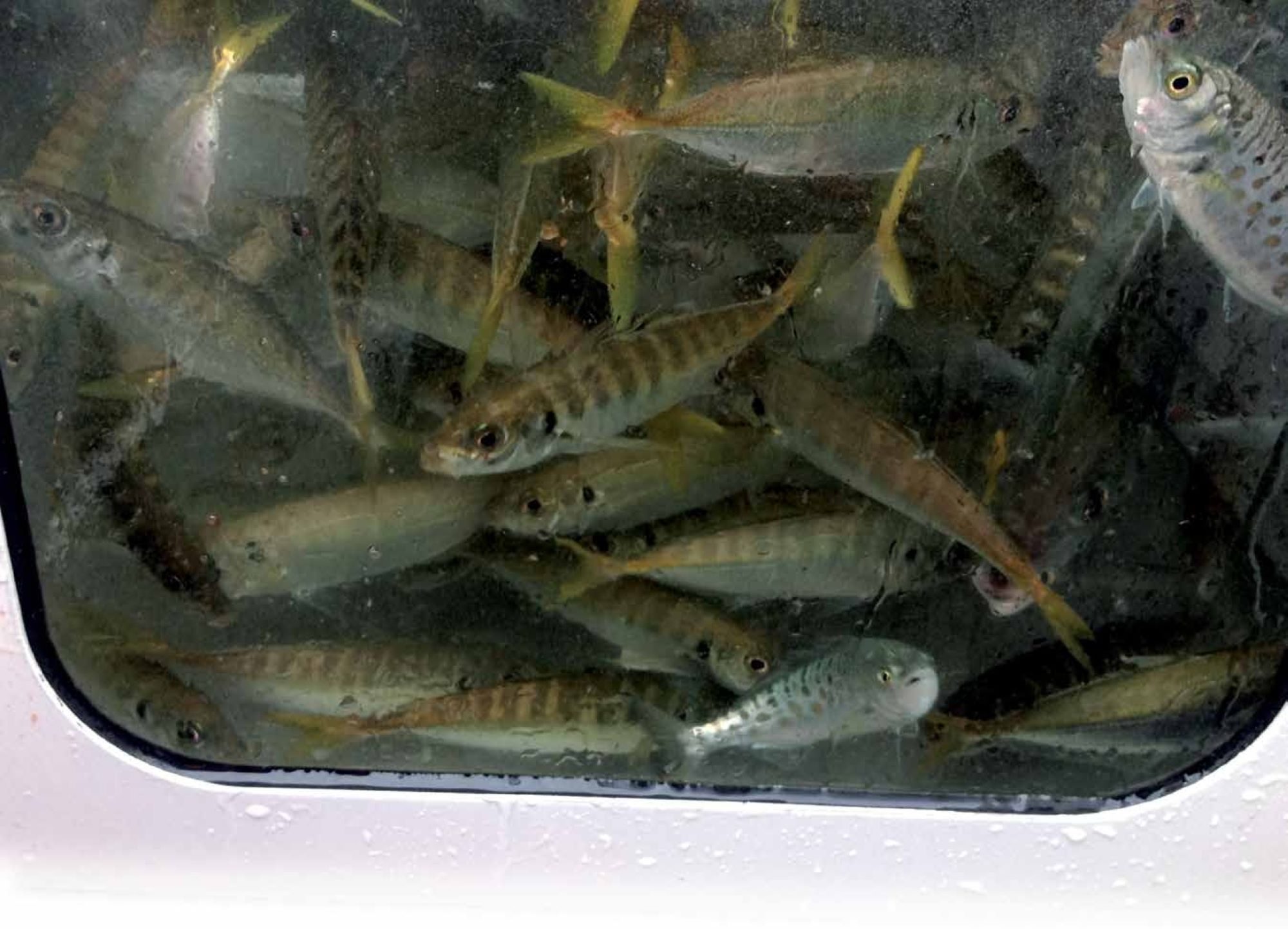

According to the calendar summer is well and truly over, but in fishing terms it’s still hanging in there, reckons John Eichelsheim.
After a spring and summer of incredibly warm sea surface temperatures, there’s a good chance late summer/autumn fishing patterns will extend into June or even July this year. Game fishing, which has been very good so far, is certainly showing no sign of tapering off.
As I write in early April, coastal water temperatures around New Zealand are still two to five degrees warmer than historical averages (air temperatures remain above average too). And since water takes much longer to cool than air, it could be a while before the onset of typical winter fishing.

This seems to be the case in my local fishery, where marauding kingfish continue to patrol the Hauraki Gulf’s harbours, estuaries and inshore reefs as though it were midsummer, and school snapper are still spread far and wide.
TOO WARM FOR ANCHOVIES?
Locally, the normal autumn pattern is for snapper, kingfish, kahawai – and to a lesser extent, predators like jack mackerel, trevally and john dory – to shadow the anchovy schools that come inshore at this time.
There’s not much known about anchovy migrations, but it’s thought they move inshore in response to changes in water temperature which affect plankton abundance and may trigger spawning.
Scientists think anchovies need water temperatures of between 15 and 20°C to successfully spawn; in Australia anchovies spawn in the open water of sheltered bays, inlets and estuaries, so they probably do the same here.
Whatever the reason for their inshore migrations, anchovies present a seasonal bonanza for fish and fishers alike, providing anglers with spectacular multi-species fishing that’s easily accessible.
So far, the inshore anchovy run hasn’t really got going – at least not where I fish. Skipjack tuna are feasting on anchovy schools in open water, but anchovy work-ups closer to shore have been sporadic at best.
The intense predatory fish and bird activity associated with schooling anchovies in Hauraki Gulf normally peaks in March-April, but with the water temperature hovering around 22°Celsius, I’m not convinced the ‘run’ has properly started yet.
Different regions of New Zealand experience anchovy migrations at different times of year. As noted above, in the Hauraki Gulf it’s usually between late February and early April, which fits with the region’s usual water temperature profile, but in the Bay of Islands and the Far North, it’s later – May or June, with sporadic runs possible all winter long.
So, given that local waters are still well over 20°C, it’s not surprising the anchovy run has been disappointing so far. The good news is that the best may still be to come: it wouldn’t surprise me if the Gulf’s anchovy run peaked in April-May this year, or if I’m still chasing anchovy workups in June or July!
WATCH FOR BIRDS
Though the run has been patchy, when you can find anchovy schools the fishing is good. And, if my hunch is right, it will only get better as the water cools.
The easiest way to find anchovy action is to look for birds. Diving terns is a sure indication of predators below – usually kahawai, but sometimes kingfish and snapper – pushing anchovies up to the surface.

Fluttering shearwaters indicate lots of bait in the vicinity, so when you come across them you know you are ‘in the zone’. Penguins are another indicator of bait fish close by and shags can be useful as well.
Sometimes you can see anchovy schools plankton-feeding on the surface with no birds or other fish in attendance. There are probably predator fish nearby, but if nothing is molesting the bait, it can be a waiting game until nature throws the switch and a feeding frenzy begins.
SMORGASBORD
The beauty of fishing around anchovy schools is the variety of predators they attract. Kahawai are usually the most obvious, pushing the bait to the surface and slashing through it, but all kinds of fish get in on the action.
This is especially true if the carnage has been going on for some time, or the bait has been concentrated in a restricted area – predators often trap anchovy schools against the shorelines of bays and coves where they are more easily picked off in the shallow water.
As well as kahawai, expect to encounter snapper, kingfish, john dory and trevally around anchovy schools. You might also hook blue cod, jack mackerel and gurnard. Depending on the location, skipjack tuna might also figure in the mix.

If the bait has been pushed up against a rocky shoreline, a variety of reef species like pig fish, scarlet and sandagers wrasses – even spotties and parore – can also be taken.
THINK SMALL
It’s lure-fishing heaven during the anchovy run, though you should adapt your approach to ‘match the hatch’ by presenting lures that approximate the size and shape of the anchovies the predators are eating.
Anchovies range in size from very small to around 10 or 12cm, so small lures are the order of the day. These include soft plastics, especially small ones, micro-jigs, small sinking stick baits and saltwater flies in silver/blue/green ‘baitfish’ colours.
Fly-fishing during the anchovy run is the ultimate buzz, offering consistently good catches of kahawai, snapper, trevally and kingfish.

And while individual anchovies are small, taken together they present a lot of food, so they attract large numbers of predatory fish in a range of sizes. You never quite know what you’ll hook.
It’s unusual to encounter large kingfish feeding on anchovies, though they may prey on the kahawai and mackerel that are, so it doesn’t hurt to throw a few large topwater lures around. Generally though, kingfish tend to be under the 750mm legal size limit, unless you are lucky enough to come across mixed schools of anchovies and pilchards, which can mean larger kingfish and larger snapper too.
GETTING PAST THE KAHAWAI
Kahawai are great fun to catch and pretty good eating when treated right, but fishing around the anchovy schools, it can sometimes be difficult to catch anything else.
If it’s snapper you are after, the best strategy is to fish around the fringes of the action rather than casting to the splashing kahawai and diving birds at the heart of it. You’ll still hook plenty of kahawai out on the edges, but you have a much better shot at snapper and other species.
Kingfish tend to be an incidental catch, but you can specifically target them with small stick baits, metal jigs/micro-jigs and larger soft plastics. Like everything else during the anchovy run, kingfish tend to be keyed in on small baits, but sometimes throwing a larger or different lure can trigger a kingfish bite when a small lure only catches kahawai and snapper.




